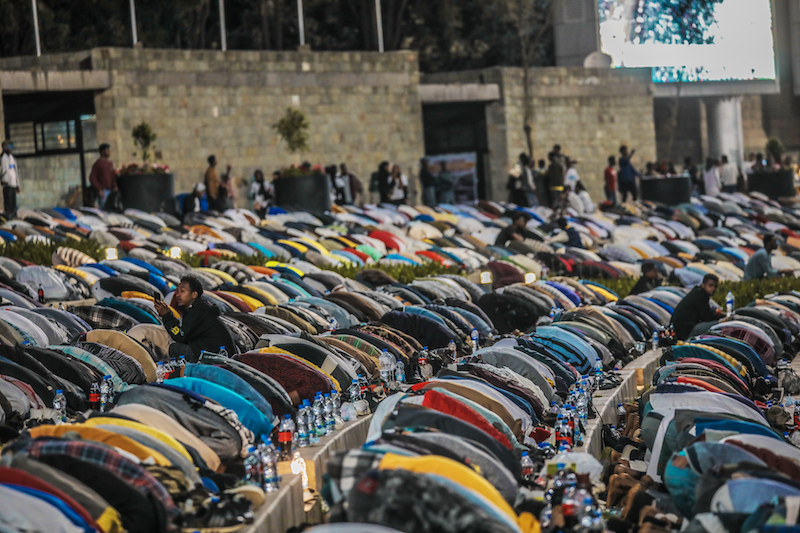Islam and Ethiopia have ties as old as the sixth century: in 615 a group of Muslims were ordered by the Prophet Muhammad to escape persecution in Mecca and travel to Ethiopia, which was then ruled by Najashi, a Christian king known for his fairness. Upon recievng the Muslim refugees, Nejashi provided shelter and protection, regardless of the repeated requests made by the Qurayish tribes to hand them back. Al-Nejashi Mosque, one of the oldest mosques in Africa, still stands intact in Tigray, bearing the graves and bodies of the nine refugees which were first sent by the prophet.
Bilal ibn Ribah, the first Muezzin, the person chosen to call the faithful to prayer, and one of the foremost companions of Prophet Muhammad, was born in Mecca to an Abyssinian (Ethiopian) mother.
Ethiopia is also home to Harar: A historic town home to a UNESCO world heritage site, and regarded as the fourth holiest city in Islam after Mecca, Madinah and Jerusalem. It has 82 mosques, three of which date from the 10th century, as well as 102 shrines.
Adding to the list of historic towns and pilgrimages that tie Islam and Ethiopia, The Grand Ethiopian Street Iftar, which was held for the third time this April, is another beautiful religious spectacle that has the potential to attract millions of Muslim believers every year.
This annual celebration is held on the holy month of Ramadan, where tens of thousands of believers gather to pray, sing and breakfast together. Colorfully dressed muslims from all over the city, gather at Meskal square before dusk and perform their beautiful Ramadan rituals together, amplifying voices of peace, love and togetherness.
Here are few photographs from this year’s Grand Ethiopian Street Iftar, which was celebrated with the motto “Our Iftar for Our People” aiming to raise funds to help Ethiopians affected by drought, internal displacement and poverty.
Text and Photos by
© Michael Metaferia



